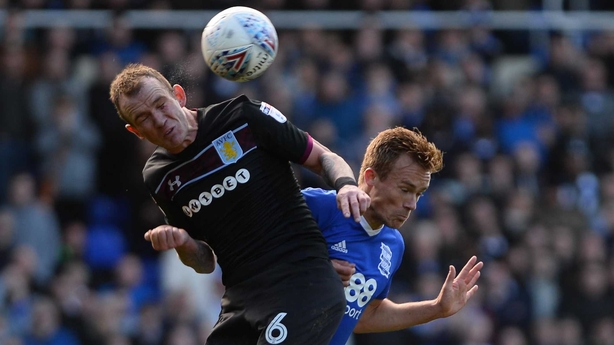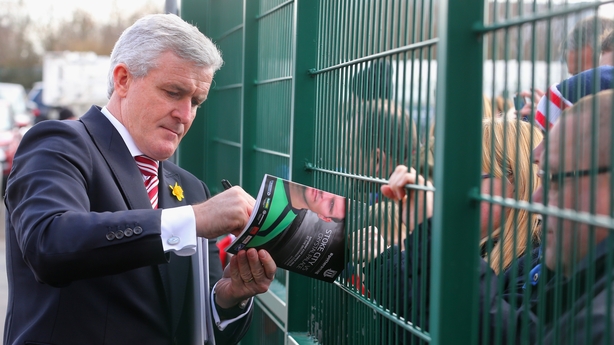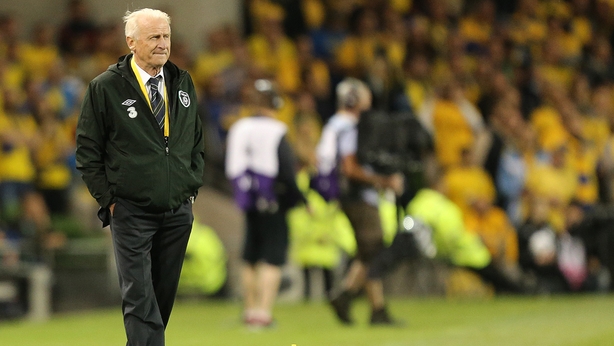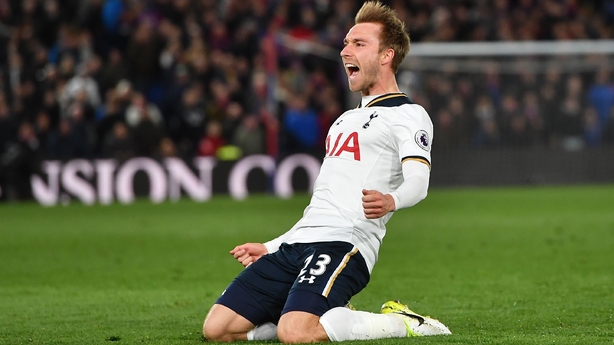Aston Villa had one point after their first three Championship games this season.
They crawled out of the blocks; a big club with great expectations, Steve Bruce's men were leaking goals and struggling up front.
At Reading in August, they flopped badly.
On 49 minutes, Adrian Popa galloped down the left side of the Villa box and tried to pull back a cross. It clipped the shins of Glenn Whelan (brought in from Stoke City for £1m last July) and looped over a stranded Sam Johnstone. Villa lost 2-1; Whelan was castigated.
These are nights the Dubliner is a lightning rod for criticism.
When things turn against a team, when they are faced with organised opposition with something to defend, the onus is on them to dictate play, to quicken the tempo and find cracks in a wall of motivated defenders.

Whelan is not brilliantly equipped to do that. Villa toiled, fans groaned, abuse followed.
Flash-forward two and half months to derby day at St Andrew's.
Whelan, in the heart of midfield, is named man of the match after a dour clash against Birmingham.
It's always a toxic meeting which demands character and commitment. He shone.
The Sky Sports stats afterwards dug up his touches (53), completed passes (26 out of 33), clearances (eight) and number of times he gained possession (eight), stats which tell us nothing we don't know about Glenn Whelan: he's good at the dirty end of the game and is very good at doing stuff people take for granted.
It's why he rarely gets singled out for praise. He performs duties most fans think they could do. Ten-yard sideways passes, tackles, running. Nobody will ever sit in the pub cooing about the Cruyff Turn Whelan did on his own six-yard box. He's functional and pragmatic; never flashy, never showy.
So why is he still playing such a high level of football at one of the biggest clubs in England?

How did he manage to build out a lengthy Premier League career with Stoke under two different managers (only Ryan Shawcross has more top-flight appearances for the Potters)? What did Trap see in him, or Martin O'Neill for that matter?
In short, Whelan's commitment to the mundane is exactly what has helped him carve out a niche at the top end of the game. He will relentlessly do what he's asked to do: sit, track, harry, destroy.
He's the antithesis of a playmaker; an annoyance, the guy there to ruin the game for technically better players, to shield his back four often just by existing - an obstacle, a presence, a barrier.
And on his day, he does it really well.
The problem is when he's asked to create and not destroy.
He became a sort of poster boy for the Trap era when things turned ugly - unimaginative, uninspiring, slow and predictable - and he's almost always used as the unfavourable comparison in any debate for Wes Hoolahan's inclusion in the starting XI.

When teams sit back and don't try to light fires for an Irish midfield to put out, the focus is on the Boys in Green to find a spark.
He's not the only Irish midfielder more comfortable tossing buckets of water than rubbing twigs together, but Whelan tends to get the brunt of the criticism when the engine room fails to click.
That's not always fair but it's understandable.
Now consider this.
Martin O'Neill will be without two key central midfielders in Copenhagen Saturday week.
David Meyler's injury-time yellow card in Cardiff rules him out of the first leg; James McCarthy's fragile hamstring has almost certainly pulled the plug on any hopes he had of featuring.
O'Neill has spoken of the importance of grabbing an away goal - "that'll be the first thing you'd be thinking about" - and last week he spoke of how Robbie Brady's sucker-punch in the Zenica mist gave Ireland the perfect platform to kill off Bosnia in Dublin and make the Euros two years ago.
But nobody is expecting his team to throw off the shackles and take the game to the Danes at Parken Stadium.

Against Wales, in a game Ireland had to win, he swamped the midfield and kept almost everybody behind the ball. He played the percentages, banking on the hosts to punch themselves out before hitting them with a counter. It was classic rope-a-dope tactics and it worked.
It's highly likely O'Neill will look to repeat the trick when he comes up against his old team-mate Age Hareide on the touchline.
Whelan started on the bench in Cardiff, replacing Harry Arter for the last 13 minutes.
He'll carry a yellow card into the first leg against Denmark and would miss the return if he's booked again but if he's asked to patrol that area between midfield and defence, his commitment is guaranteed.
O'Neill wants Christian Eriksen kept as far away from goal as possible; the best way to do that is cut out the supply line into the pockets of space the classy Spurs man loves to exploit in the opposition's final third.
Frustrate him, force him to move back towards his own goal to get on the ball.
The responsibility of stopping him getting it from deeper will fall to others higher up the field.
If O'Neill wants a terrier to deny the Danes space then it's Whelan he'll turn to.
There are two ways Ireland can approach this first leg: bring the game to their hosts and try to grab a clear away win that could kill the tie, or keep things as tight as possible to ensure this play-off is still alive by the time they come back to Dublin.
We've seen nothing from O'Neill in his time at the helm to suggest he'll choose the first option.
Expect Glenn Whelan to be placed in shield mode then. He will neither be asked nor expected to spray passes 30 yards left and right, there only to spoil the party, and ideally help his side protect a lead - or draw - if they can plunder a precious goal on the road.
He won't do anything that surprises anybody. But it might surprise you how well he does it.


